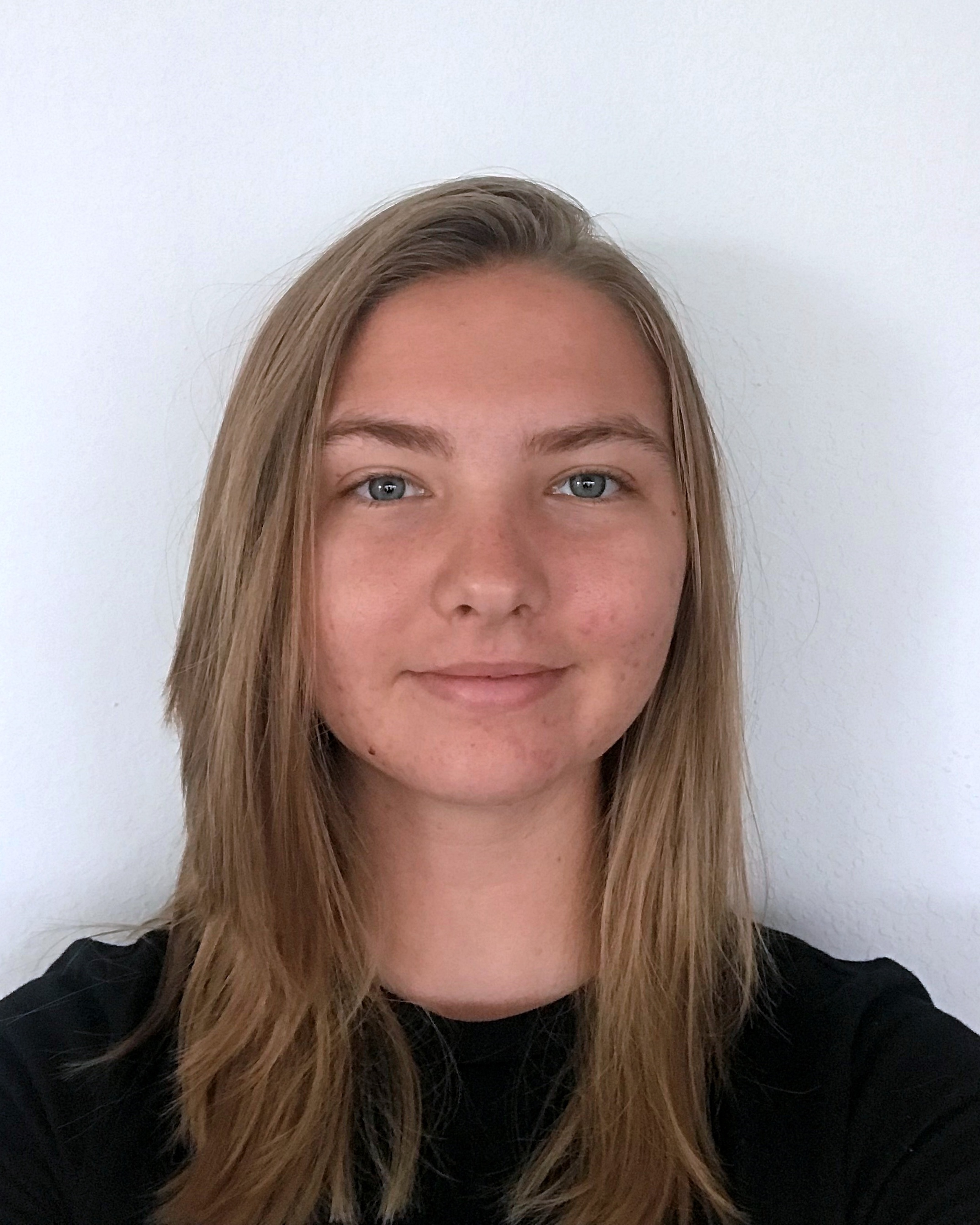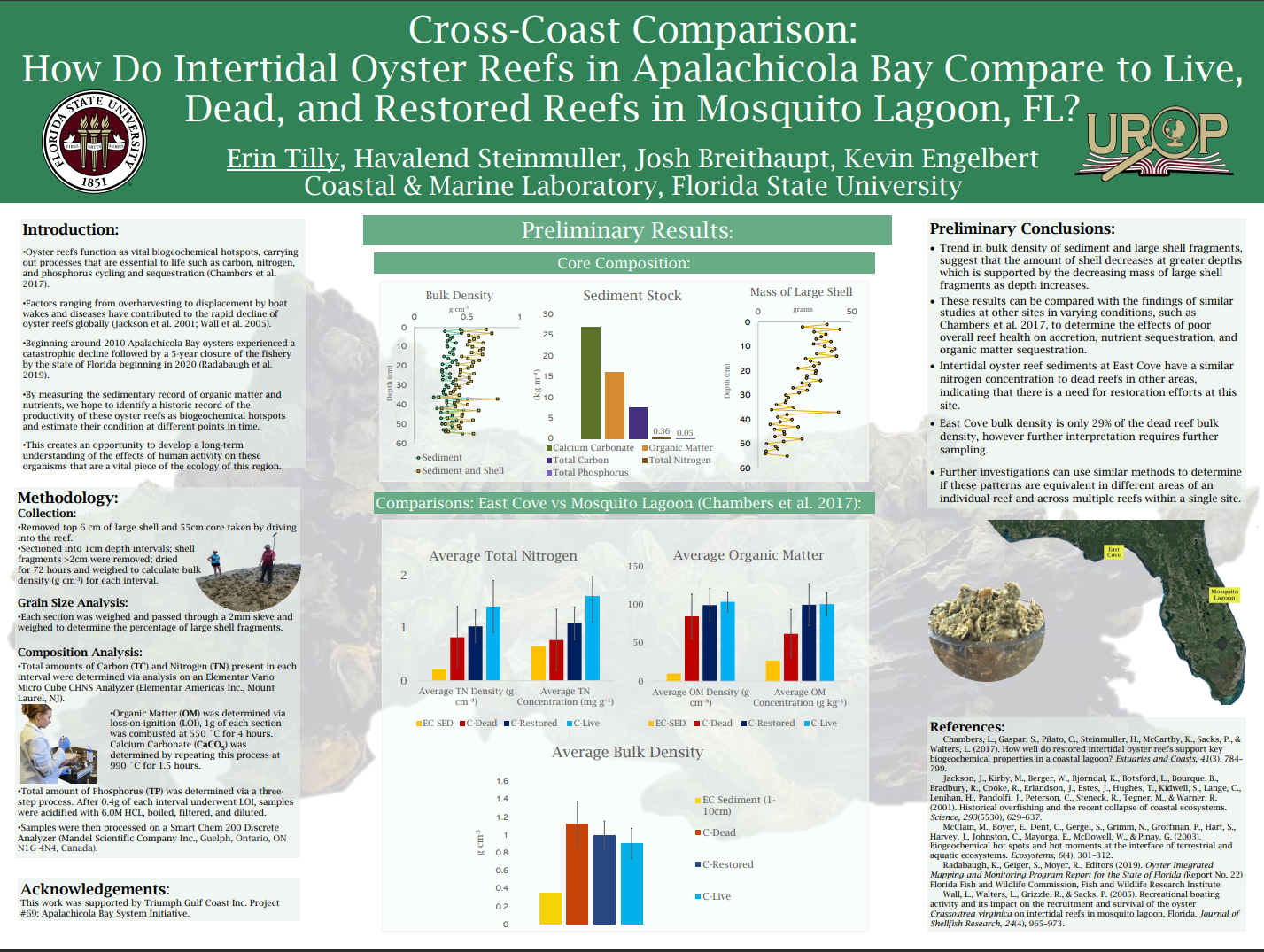Research Symposium
23rd annual Undergraduate Research Symposium, April 6, 2023
Erin Tilly Poster Session 1: 11:00 am - 12:00 pm/ Poster #357

BIO
I am a second-year Biological Science and Environmental Science student from Clearwater, FL. My research interests include intertidal coastal and estuarine ecosystems and their connections with the human communities that interact with them. I am excited to continue working with the Breithaupt lab and work to investigate the current state of intertidal oyster reefs within Apalachicola Bay in the future.
Cross Coast Comparison: How do intertidal oyster reefs in Apalachicola Bay compare to live, dead, and restored reefs in Mosquito Lagoon, FL?
Authors: Erin Tilly, Dr. Josh BreithauptStudent Major: Biological Science/Environmental Science
Mentor: Dr. Josh Breithaupt
Mentor's Department: FSU Coastal and Marine Laboratory Mentor's College: College of Arts and Sciences Co-Presenters:
Abstract
The Eastern Oyster (Crassostrea virginica) acts as a keystone species within Apalachicola Bay fulfilling roles ranging from habitat creation to nutrient cycling. Intertidal oyster reefs within the region have starkly declined over the past decade; however, the effects of this decline on their functionality as biogeochemical hotspots has been minimally studied. This preliminary investigation aims to determine the concentrations, or stocks, of key chemical constituents that comprise intertidal oyster reefs within East Cove, a site in Apalachicola Bay containing 217,405 m2 (or 54 acres) of intertidal oyster reefs. A 55 cm core was collected and sectioned into 1 cm depth intervals to determine sediment stocks (calcium carbonate, organic matter, nitrogen, carbon, and phosphorus). The concentrations from East Cove were then compared with healthy, restored, and live reefs from Mosquito Lagoon, FL. Preliminary results indicate that the concentrations of these constituents are low (TN=0.656 mg g-1, OM=29.3 mg g-1), but comparable to those found in dead reefs in other regions (TN= 0.775 ± 0.53 mg g-1, OM= 61.8 ± 31.9 mg g-1). However, the bulk density of the sampled reef (BD = 0.331 g cm-3) was dramatically lower than all Mosquito Lagoon Reefs (BD = 1.126 ± 0.775 g cm-3). Bulk density describes the quantity of reef sediment in a given area; therefore, it is crucial to understand the factors influencing these differences in potentially similar reefs. Explanations for these differences in bulk densities require further investigation and core samples from East Cove and other sites within Apalachicola Bay.
Keywords: oyster, bay, biogeochemistry, Apalachicola, FSU-CML


